Have you ever wondered why a golden sceptre from ancient Tamil heritage now resides in India’s Parliament? The Sengol, a symbol of justice and authority, connects India’s rich past with its democratic present. Discover how this historic artefact became a powerful emblem in the heart of the new parliament building.
What is Sengol?
The Sengol is a sacred sceptre, a symbol of authority and justice with deep roots in Indian history and culture. Crafted by Vummidi Bangaru Jewellers (VBJ), a distinguished name in the jewellery industry, the Sengol is made from over 100 sovereigns of gold and draws inspiration from traditional Tamil symbols used by ancient rulers to signify their principles of righteous rule and the transfer of power. The Sengol represents power and the responsibility that comes with leadership.
A Walk Through Time: Significant Milestones
| Chola Dynasty Era |
| Chola Dynasty (9th-13th Century CE) The Sengol is used as a symbol of power and justice during the transfer of authority between rulers in the Chola kingdom. |
| Pre-Independence (1947) |
| Role of C Rajagopalachari Suggests the use of the Sengol to symbolise the transfer of power from British rule to independent India. Involvement of Thiruvavaduthurai Adheenam This Shaivite monastery in Tamil Nadu is entrusted with providing the Sengol for the independence ceremony. |
| 1947: India’s Independence |
| August 14, 1947 11:45 PM Lord Mountbatten hands over the Sengol to Jawaharlal Nehru in a ceremony marking India’s independence. Hymn Recitation “Kolaru Pathigam,” a hymn by Tamil saint-poet Thirugnanasambandar, is recited to bless the transfer of power and ward off obstacles. |
| Post-Independence |
| Post-1947 Storage The Sengol is kept in the Nehru Gallery at the Allahabad Museum but is mislabelled as a ‘Golden walking stick. 1978 Revival The Maha Periava of the Kanchi Math recounts the story of the Sengol, reviving its historical significance. |
| 2021–2023: Rediscovery and Installation |
| 2021 Initiative Dr. Padma Subrahmanyam writes to Prime Minister Narendra Modi, bringing attention to the Sengol’s significance. May 28, 2023 11:30 AM The Sengol is ceremoniously installed in Naya Sansad Bhavan, the new Parliament building in Delhi, placed beside the Speaker’s chair in the Lok Sabha as a symbol of justice and democratic values. |
Understanding Sengol: Its History, Symbolism, and Modern Relevance
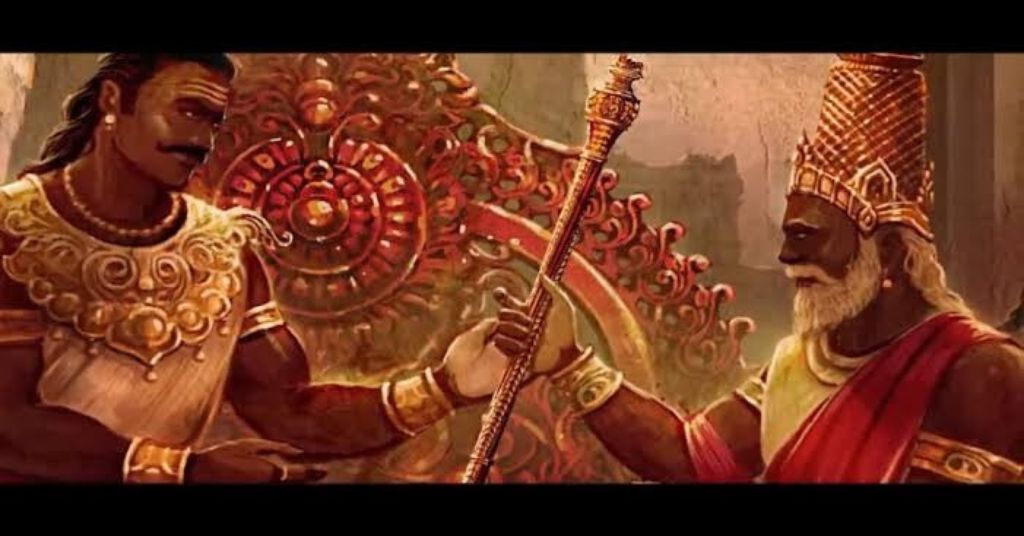
During the Chola dynasty, the Sengol was a sacred symbol that signified the transfer of power from one king to another. It represented the principles of just and fair rule that were central to the Chola administration.
When a new king ascended to the throne, the Sengol was handed over in a ceremonial gesture, marking the legitimate and orderly succession of authority. This ritual was a powerful reminder that the ruler’s duty was to govern with righteousness and uphold justice, reinforcing the values that underpinned the Chola dynasty’s governance.
This ancient practice, reflecting a well-organised administration and a deep commitment to justice, served as the foundation and inspiration for the Sengol we see today.
The Role of C Rajagopalachari in Suggesting the Sengol Ceremony to Nehru
In 1947, as India stood on the threshold of independence, the last Viceroy of India, Lord Mountbatten, sought a way to symbolise the transfer of power. Pandit Jawaharlal Nehru, India’s first Prime Minister, turned to C Rajagopalachari for guidance.
Rajagopalachari, a revered leader and scholar, drew inspiration from the Chola dynasty’s traditions and suggested the use of the Sengol to mark the momentous occasion. This decision was rooted in Tamil culture, making the Sengol a perfect emblem of the orderly and just transfer of authority.
Insights into the 1947 Ceremony Involving the Sengol
On the night of August 14, 1947, at precisely 11:45 pm, a historic ceremony took place in Delhi. Viceroy Lord Mountbatten handed over the Sengol to Pandit Jawaharlal Nehru, marking the official transfer of power from British rule to the newly independent Indian government. This exquisite piece, commissioned by the Thiruvavaduthurai Adheenam in Tamil Nadu, was entrusted to Pandit Jawaharlal Nehru, India’s first Prime Minister, in 1947.
The event was accompanied by reciting verses from Kolaru Padhigam, a hymn by Tamil saint-poet Thirugnanasambandar, symbolising divine blessings and overcoming obstacles. The ceremony was a poignant moment, capturing the essence of India’s transition to self-rule, with the Sengol as the central symbol of this momentous occasion.
Also Read : History and Importance of Sengol
Where was the Sengol Before? From 1947 to the New Parliament
The historic Sengol was once handed over to Jawaharlal Nehru during the 1947 transfer of power. It was kept in the Nehru Gallery of the Allahabad Museum in Prayagraj, largely out of public view.
Unfortunately, over time, its significance faded as it was kept in the Allahabad Museum, incorrectly labelled as a ‘Golden walking stick gifted to Pandit Jawaharlal Nehru.’ This mislabeling obscured its true importance as a symbol of India’s independence.
In 1978, the story of the Sengol was brought back into the light by the revered Maha Periava of the Kanchi Math. He recounted the tale of Nehru and the Sengol to a disciple, who later published the account, reviving the memory of this significant artefact.
In 2021, Dr Padma Subrahmanyam wrote to Prime Minister Narendra Modi, citing an article from a Tamil magazine. This initiated a series of actions that eventually led to the Sengol being restored and prominently installed in the new Parliament building.
The Symbolism Behind the Sengol
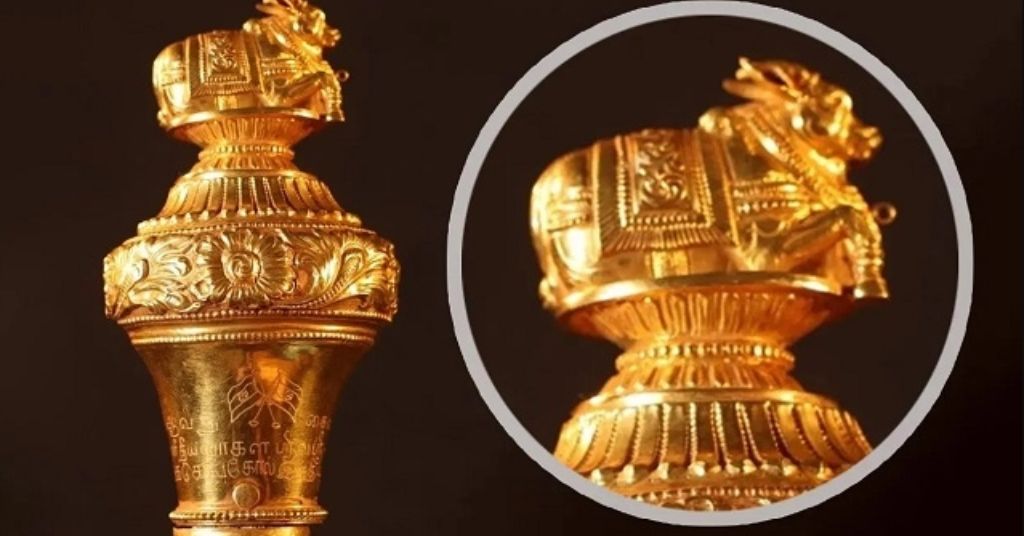
The Sengol is rich in symbolism, representing key aspects of good governance and a prosperous society.
- The sceptre is topped with a statue of Nandi, the sacred bull associated with Lord Shiva in Hindu mythology, symbolising dharma, or righteousness and justice.
- Below Nandi is an engraving of Goddess Lakshmi, the deity of wealth and prosperity, meant to invoke blessings for financial well-being.
- The stem of the Sengol is adorned with Kodimaram, a sacred tree that signifies growth and fertility.
Together, these elements reflect the ideals of justice, prosperity, and growth, which are essential for a successful and fair rule.
Did the Sengol Represent the Transfer of Power in 1947?
Absolutely, the Sengol represented the transfer of power in 1947. It was chosen specifically to symbolise the orderly and just transition of authority from British to Indian hands. The Sengol, much like the sceptres of ancient kings, served as a powerful reminder of the responsibilities that come with leadership – reminding rulers of their duty to uphold justice and serve the welfare of their people.
Materials and Craftsmanship of the Sengol
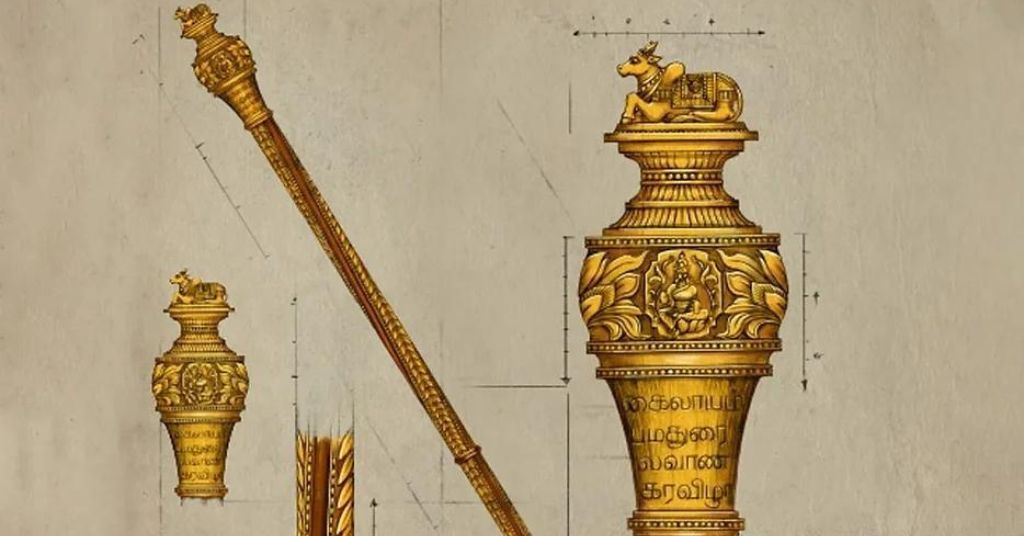
Crafted from over 100 sovereigns of gold, the Sengol is a masterpiece of intricate design and unparalleled craftsmanship. The use of gold and silver, both precious metals in Hindu tradition, adds to its grandeur. The meticulous work reflects the rich Tamil heritage and the crafter’s dedication to preserving cultural traditions.
The Designers Behind the Sengol
The creation of the historic Sengol was a momentous and honourable task for us at Vummidi Bangaru Jewellers, a name that has become synonymous with excellence in fine jewellery. This golden sceptre, now a prominent feature in the new Parliament building, was meticulously handcrafted with the utmost care and dedication, reflecting our deep roots in South Indian tradition and our unwavering commitment to quality. Our family’s legacy of craftsmanship spans generations, and the Sengol is a proud testament to that heritage.
Vummidi Ethiraju, a pivotal member of our family, was in his early 20s when he played a crucial role in bringing the Sengol to life. Now over 95 years old, he looks back on this achievement with immense pride and joy. This sceptre, designed and created by the skilled hands of the Vummidi family, was chosen to symbolise the transfer of power during India’s independence in 1947.
Sengol’s Role in India’s Independence
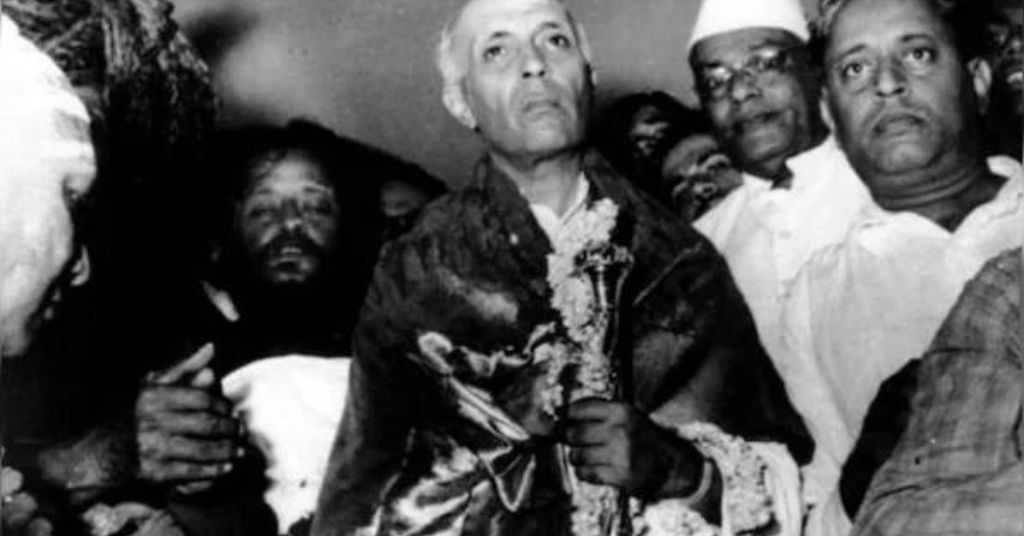
Why Sengol Was Installed in the Parliament
The importance of Sengol in the Parliament is profound, linking it to a key moment in India’s history – the transfer of power from British rule to an independent India. On May 28, 2023, the Sengol was installed in Naya Sansad Bhavan, the new Parliament building in Delhi, solidifying its place as a symbol of justice and democratic values. Placed beside the Speaker’s chair in the Lok Sabha chamber, the Sengol reminds lawmakers of their duty to govern with fairness and integrity, reflecting the very ideals it was crafted to embody.
Comparing the Old and New Parliament Buildings
The old Parliament building, a remnant of India’s colonial past, has witnessed many historic debates and decisions. However, the new Parliament building represents India’s progress and aspirations. With its modern design and facilities, it is a symbol of the country’s growth. The installation of the Sengol in this new structure serves as a bridge between the past and the future, ensuring that the principles of justice and governance continue to guide the nation.
The Significance of Re-enacting the Sengol Ceremony in the New Parliament
Re-enacting the Sengol ceremony in the new Parliament is not just a ceremonial act; it is a reaffirmation of the principles that underpin India’s democracy. The Sengol, as a symbol of just rule, serves as a constant reminder of the importance of governing with fairness and integrity. By placing the Sengol in the new Parliament, India has reaffirmed the enduring relevance of its cultural heritage in shaping the values of current governance.
Also Read: Significance Of Sengol That Every Indian Should Know
VBJ Legacy
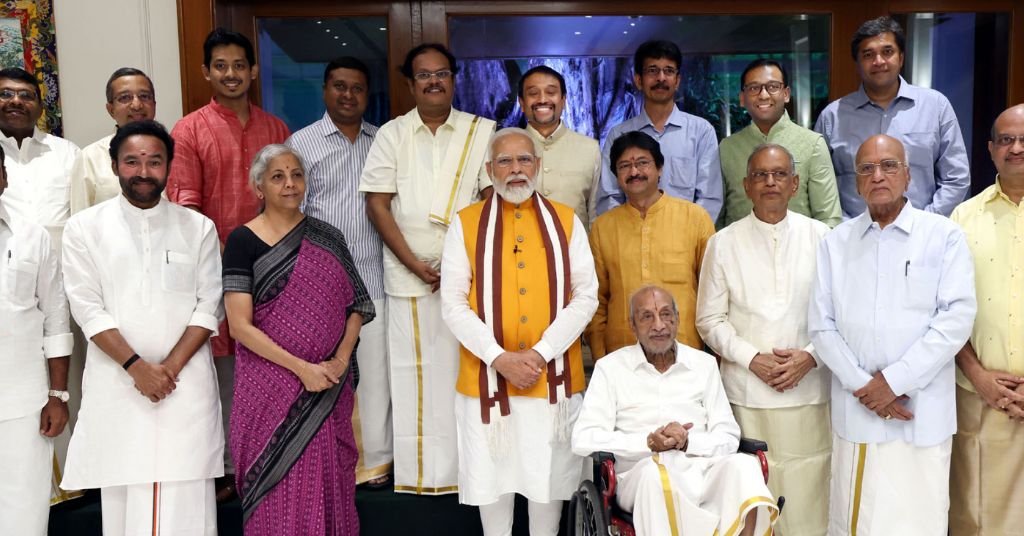
At Vummidi Bangaru Jewellers, we are proud to have played a pivotal role in preserving and celebrating India’s cultural heritage. Established in 1900, our legacy is built on a foundation of quality, craftsmanship, and tradition. The creation of the Sengol is a testament to our commitment to these values. As a family-owned business, we have passed down our expertise through generations, maintaining our reputation for excellence. The Sengol is more than just a symbol of authority – it reflects VBJ’s dedication to preserving India’s rich cultural history. In addition to crafting the historic Sengol, Vummidi Bangaru Jewellers is renowned for its diverse and exquisite jewellery collections. These collections reflect VBJ’s legacy of excellence and our passion for blending tradition with innovation.
Summing Up
The Sengol is a symbol that transcends time, embodying the ideals of justice, prosperity, and growth that have guided India through its journey to independence and beyond. Crafted by VBJ with care and precision, the Sengol serves as a reminder of the responsibilities of leadership and the importance of governance rooted in fairness and integrity.
Its installation in the new Parliament building is a powerful gesture that connects India’s rich cultural past with its present and future. As India continues to evolve, the Sengol will remain a timeless emblem of the principles that should guide its leaders.
| For Latest Updates and Trends Checkout Official Vummidi Bangaru Jewellers Instagram Page |
FAQs Related To What Is Sengol
1. What is the significance of Sengol in Indian history?
The Sengol is a symbol of righteous rule and the transfer of power, historically used during the Chola dynasty to represent the legitimate succession of authority among rulers.
2. Why was the Sengol chosen for India’s independence ceremony in 1947?
The Sengol was chosen for the independence ceremony as it represented the orderly and just transfer of power, deeply rooted in Indian traditions, specifically from the Tamil culture.
3. Where was the Sengol kept after the 1947 independence ceremony?
After the ceremony, the Sengol was stored in the Nehru Gallery at the Allahabad Museum, where it remained largely out of public view and was mislabelled as a walking stick.
4. Who crafted the Sengol, and what materials were used to craft it?
The Sengol was meticulously crafted by Vummidi Ethiraju, a distinguished member of the Vummidi Bangaru Chetty family. With deep roots in traditional South Indian craftsmanship, Vummidi Ethiraju and his team dedicated their skills to creating this historic symbol of justice and authority, reflecting VBJ’s legacy of excellence. The Sengol is crafted from over 100 sovereigns of gold, showcasing intricate designs and superior craftsmanship.
5. Why is the Sengol installed in the new Parliament building?
The Sengol was installed in the new Parliament building to symbolise the continuity of justice, governance, and democratic values in India’s evolving political landscape.
 Store Locator
Store Locator 

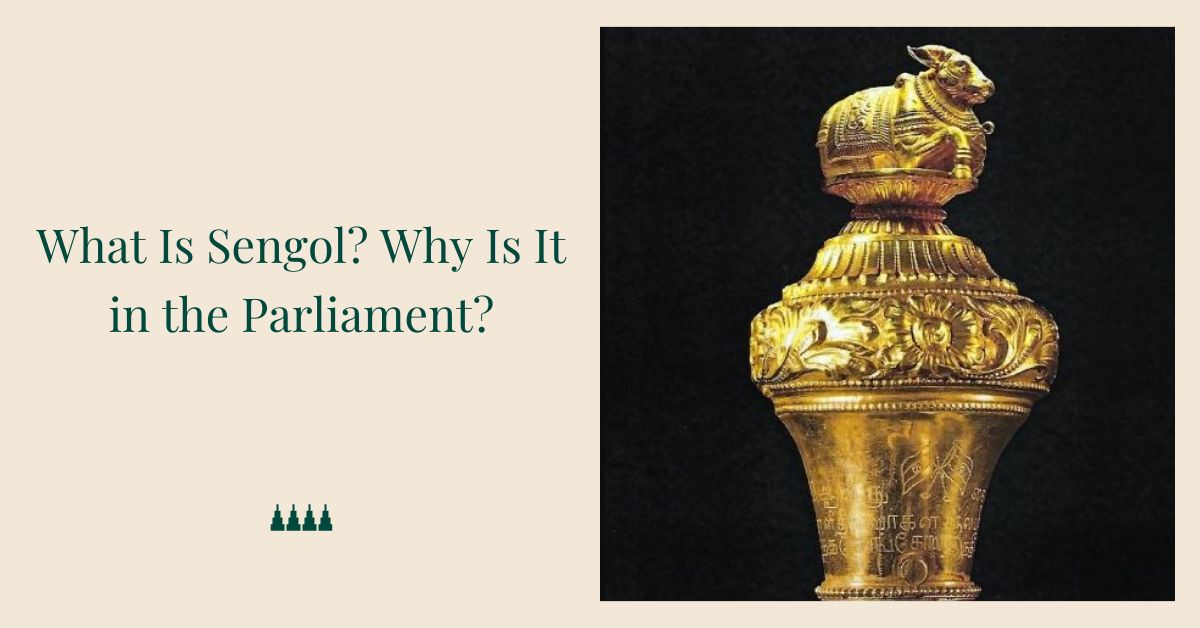
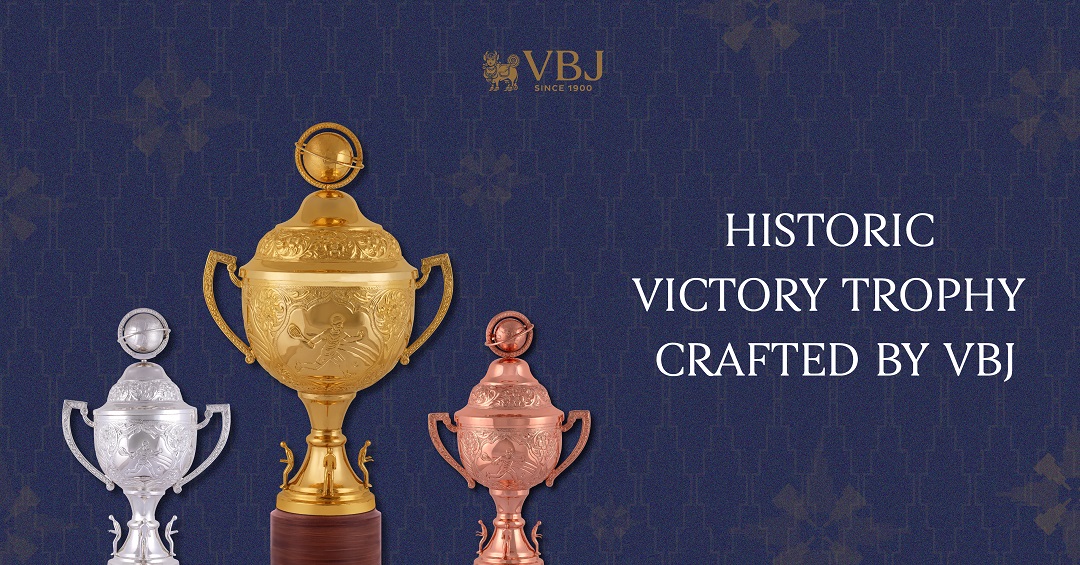

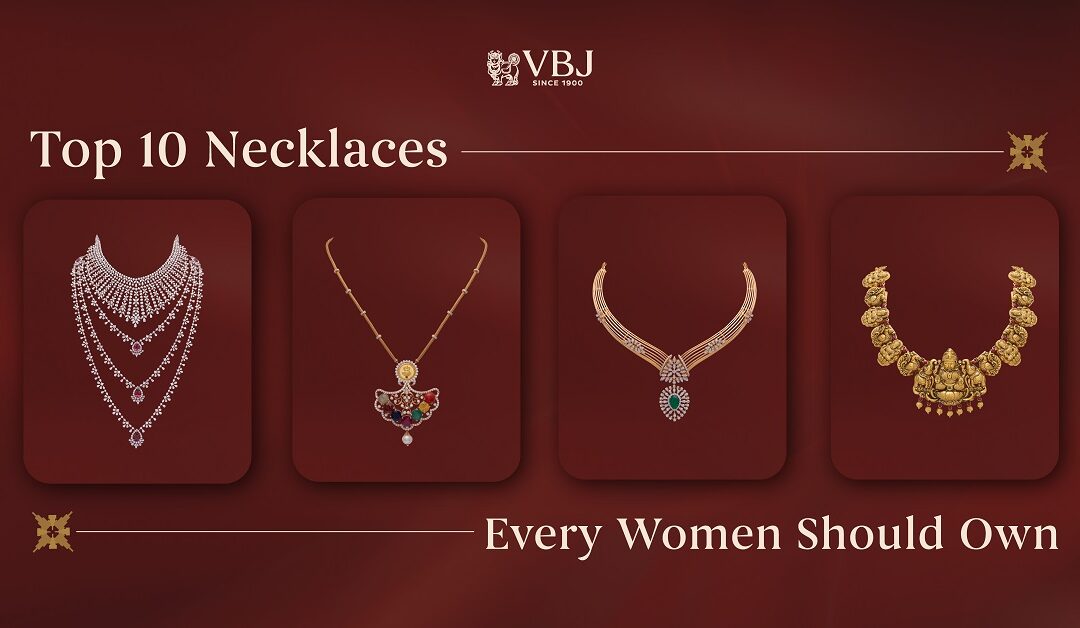


0 Comments